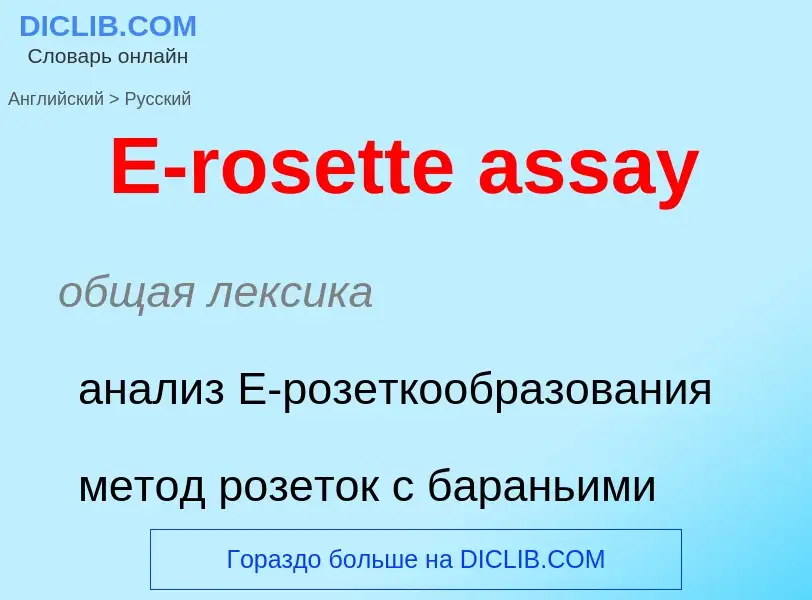Translation and analysis of words by ChatGPT artificial intelligence
On this page you can get a detailed analysis of a word or phrase, produced by the best artificial intelligence technology to date:
- how the word is used
- frequency of use
- it is used more often in oral or written speech
- word translation options
- usage examples (several phrases with translation)
- etymology
E-rosette assay - translation to English
общая лексика
анализ E-розеткообразования
метод розеток с бараньими эритроцитами
E-РОК анализ
общая лексика
биологическая проба
биопроба
медицина
биологический анализ
[ə'seiiŋ]
существительное
общая лексика
опробование
определение металла в руде
пробирное искусство
химия
количественный анализ
Definition
1.
Wikipedia
A Klemperer rosette is a gravitational system of (optionally) alternating heavier and lighter bodies orbiting in a symmetrical pattern around a common barycenter. It was first described by W.B. Klemperer in 1962, and is a special case of a central configuration.
Klemperer described rosette systems as follows:
Such symmetry is also possessed by a peculiar family of geometrical configurations which may be described as "rosettes". In these an even number of "planets" of two (or more) kinds, one (or some) heavier than the other, but all of each set of equal mass, are placed at the corners of two (or more) interdigitated regular polygons so that the lighter and heavier ones alternate (or follow each other in a cyclic manner).(p 163)
The simplest rosette would be a series of four alternating heavier and lighter bodies, 90 degrees from one another, in a rhombic configuration [Heavy, Light, Heavy, Light], where the two larger bodies have the same mass, and likewise the two smaller bodies have the same mass, all orbiting their (empty) geometric center. The more general trojan system has unequal masses for the two heavier bodies, which Klemperer also calls a "rhombic" system, and which is the only version that is not symmetric around the gravitational center.
The number of "mass types" can be increased, so long as the arrangement is symmetrical and cyclic pattern: e.g. [ 1,2,3 ... 1,2,3 ], [ 1,2,3,4,5 ... 1,2,3,4,5 ], [ 1,2,3,3,2,1 ... 1,2,3,3,2,1 ], etc.
Klemperer's article specifically analyzes regular polygons with 2–9 corners – dumbbell-shaped through nonagon – and non-centrally symmetric "rhombic rosettes" with three orbiting bodies, the outer two stationed at the middle orbiting body's triangular points (L4 and L5), which had already been described and studied by Lagrange in 1772. Systems with an even number of 4 or more corners can have alternating heavy and light masses at the corners, although the possible range of mass ratios is constrained by para-stability requirements; systems with odd numbers of corners must have equal masses at every corner. While Klemperer notes that all the rosettes and the rhombus are vulnerable to destabilization, the hexagonal rosette is the most nearly stable because the "planets" sit in each other's semi-stable triangular Lagrangian points, L4 and L5.(p 165)
The regular polygonal configurations ("rosettes") do not require a central mass (a "sun" at the center is optional, and if present it may bobble above and below the orbital plane), although a Lagrange-type rhombus does. If a central body is present, its mass constrains the ranges for the mass-ratio between the orbiting bodies.

